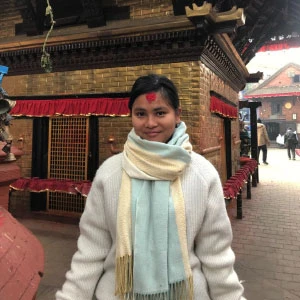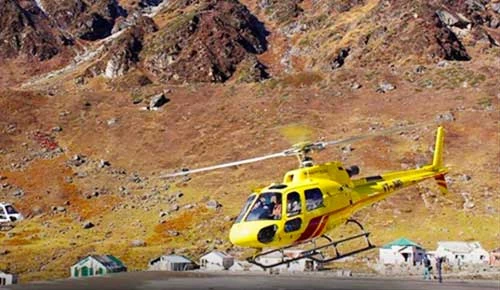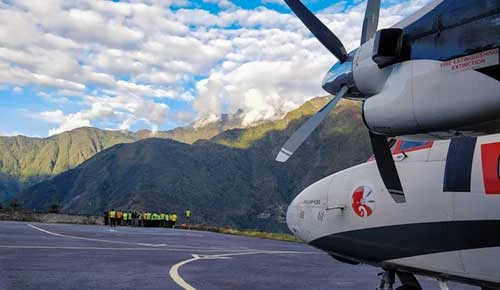Kala Patthar Viewpoint: The Best Spot for Mount Everest
If you have once dreamed about watching Mount Everest in all its superiority, you will be keen on knowing about Kala Patthar. This stone viewpoint in Nepal is one of the most renowned locations in the Himalayas, and the reason behind this fame is because it gives trekkers the closest and clearest view of Everest ever.
Traveling to the Everest Base Camp Trek is the ultimate spot for many adventurers. Well, the thing is that Base Camp does not reveal such a wonderful view of Everest. Other peaks, particularly Nuptse, largely obstruct the mountain. And that is where Kala Patthar pitches in. It gets you up to 5,545 meters (18,192 feet) and will give you the only front-row ticket to the highest mountain on earth.
What is so unique about the show Kala Patthar? And where is one to shift to? So, we shall take a closer look at it.

Location of Kala Patthar
Kala Patthar is a small rocky summit located in the Khumbu region of northeastern Nepal, within the Sagarmatha National Park. It sits at an altitude of approximately 5,545 meters (18,192 feet) and is considered one of the best viewpoints for Mount Everest. Although Kala Patthar is not the highest peak in the region, it offers a clear and unobstructed view of Everest, Nuptse, Lhotse, and Pumori, making it a favorite spot for trekkers and photographers.
Geographically, it is situated near the Gorakshep village, which is usually the last stop before the summit, and lies on the trail connecting Everest Base Camp (5,364 m) to the higher surrounding ridges. The trek to Kala Patthar typically starts from Lukla, passing through popular trekking hubs like Namche Bazaar, Tengboche, Dingboche, and Lobuche.
Its location within the Sagarmatha National Park region ensures stunning Himalayan scenery along the route, including glacial moraines, high-altitude landscapes, and diverse wildlife, making it not only a trekking challenge but also an unforgettable visual experience.
Table of Contents
What is so special about Kala Patthar?
Kala Patthar does not mark any other ordinary panorama, it is most frequently referred to as the peak of the whole EBC trek. Here’s why:
- Best view of Mount Everest: Kala Patthar offers one of the best views of Mount Everest and of its summit, compared to the view in Base Camp.
- The 360 Penthouse view: you can observe Everest, Lhotse, Nuptse, Pumori, Ama Dablam, and Khumbu glaciers in one photograph.
- Famous sunsets and sunrises: The scenario when the first or last sun rays hit the snowy mountains and covered them in a golden color remains in memory.
- The feeling of accomplishment: At 5,545 m, many non-mountaineers often achieve a sense of accomplishment after trekking to it, making it the highest point that many people can and will reach.
- Base camp is something required, but it is Kala Patthar that is magic.
How to Reach Kala Patthar
Reaching Kala Patthar is not very difficult, though it is physically demanding due to the high altitude. Most trekkers start from Gorakshep (5,164 m), the last settlement with lodges on the way to Everest Base Camp. From Gorakshep, it usually takes 1.5 to 2.5 hours to reach the summit, depending on your pace, fitness, and how well you are acclimatized.
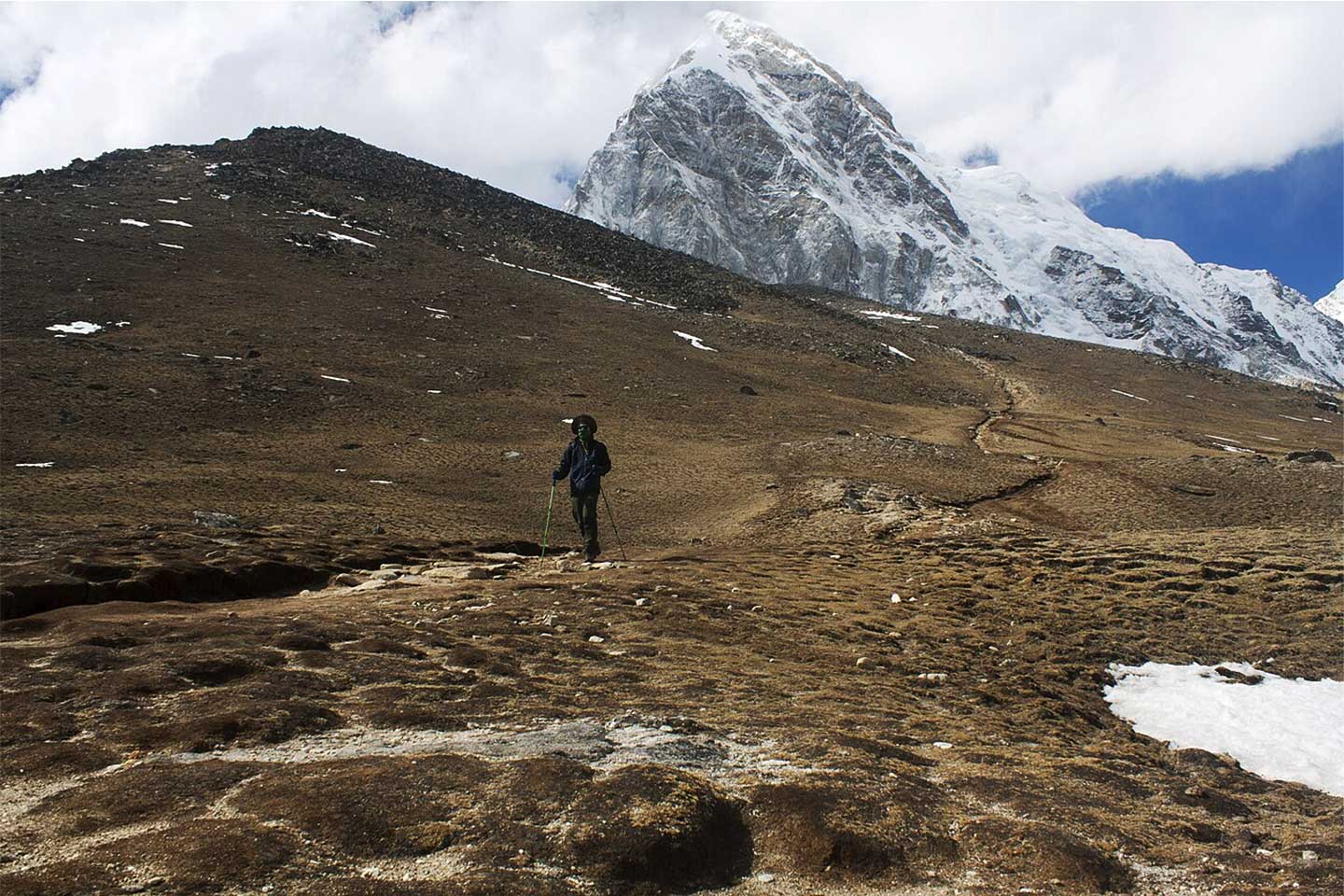
The trail itself is straightforward, but the thin air makes each step more challenging. The path is steep and rocky in places, and it can be quite cold, especially in the early morning. Most trekkers begin their hike very early, using headlamps to reach the top in time for a breathtaking sunrise over Everest. Some prefer a late afternoon trek to avoid crowds and enjoy the mountains bathed in golden sunset colors. At the summit, the stunning panoramic views make all the effort worthwhile.
Kala Patthar vs. Base Camp on Mount Everest
Trekkers usually question the need to pay extra to have Kala Patthar included in their Everest trip when they are going to Base Camp. The fact is that the two experiences are quite different and complete each other.
At the Everest Base Camp (5,364 m), you can't deny the sensation of standing directly beneath the world's highest mountain. You will see Khumbu Icefall with your own eyes, will hear the roar of avalanches in the distance, and will have a good feeling that you are where the climbers are about to start their climb. Base Camp, on the other hand, does not present a nonchalant image of the Everest pinnacle.
Kala Patthar (5,545 m) is purely view-based, on the other hand. In this one, Everest is standing tall in the background of mountains. The tone is less bright and deeper, and it is photographable. The emotional highlight of the trek is Kala Patthar, while the camp serves as a special turning point.
What to Expect at the Viewpoint?
Trekking to Kala Patthar is like stepping into a photographer’s dream, as it offers one of the most spectacular panoramic views of the Himalayas, especially Mount Everest. From the summit of Kala Patthar, standing at 5,545 meters (18,192 feet), trekkers are greeted with a breathtaking 360-degree view of some of the world’s tallest peaks.
Key Highlights:
Mount Everest: Kala Patthar provides the closest unobstructed view of Everest, perfect for sunrise photography. The first golden rays of the sun hitting Everest create an unforgettable spectacle.
Nuptse, Lhotse, and Pumori: These surrounding peaks form a dramatic backdrop, making the entire panorama even more mesmerizing. Nuptse’s dark ridge contrasts beautifully with the bright snow-capped Everest.
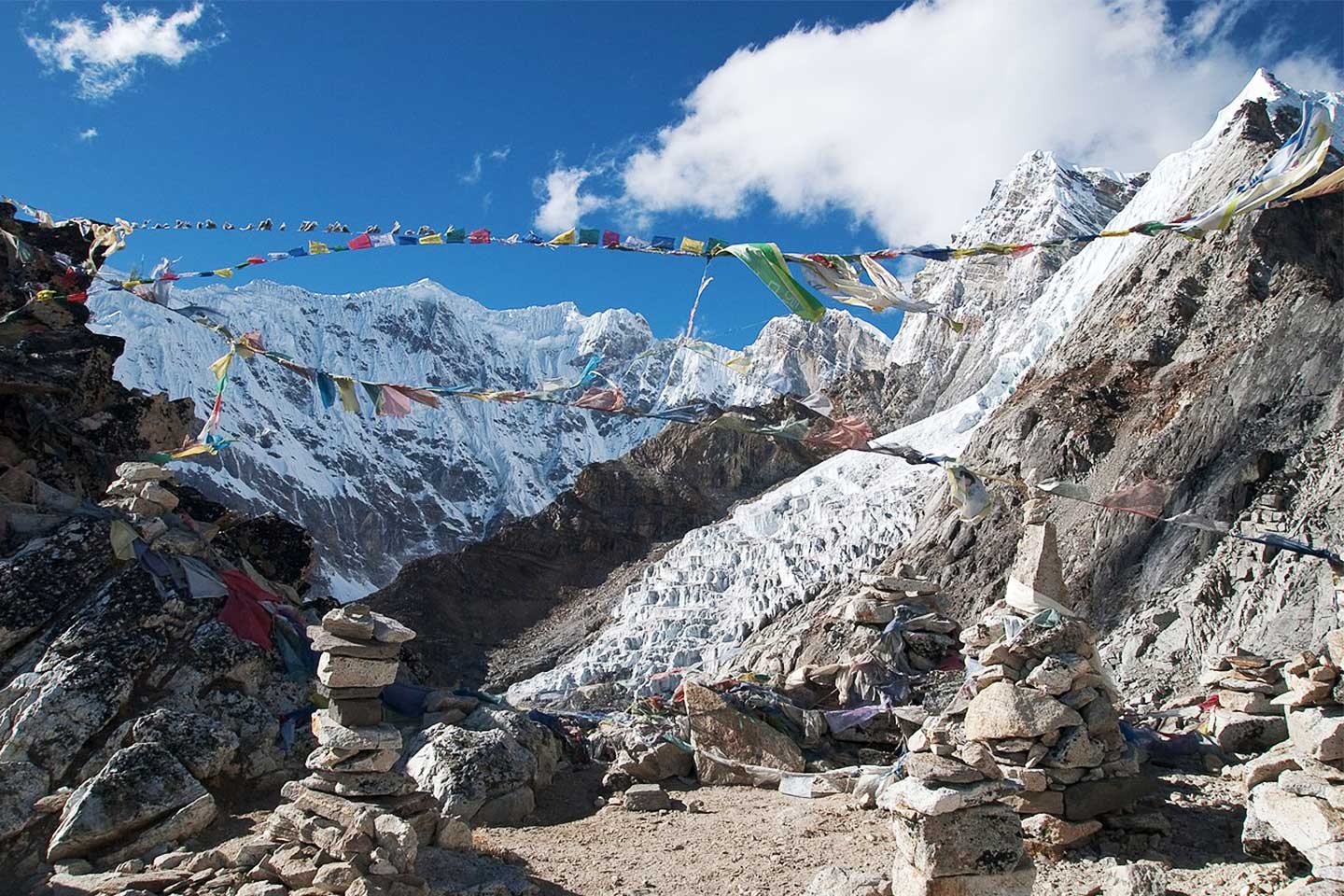
Everest Base Camp & Glacier Views: From Kala Patthar, you can see the Everest Glacier and parts of the Base Camp, giving trekkers a unique perspective of the region’s rugged terrain.
Sunrise and Sunset: Many trekkers prefer to start early from Gorakshep to witness the sunrise. The changing colors on the mountains—from soft pink to fiery orange—create picture-perfect moments. Sunset views are equally magical, though less common due to trekking schedules.
Weather and Visibility: The visibility is generally best in autumn (September–November) and spring (March–May). Winter mornings can also be clear, but extreme cold and snow make the trek more challenging. Clouds and fog during monsoon season can obscure the view, so timing is crucial.
Flora and Fauna: While the higher slopes of Kala Patthar are mostly rocky, the lower areas along the trek may showcase Himalayan wildflowers in spring, and you might spot Himalayan birds and small wildlife along the trail.
A Day at Kala Patthar: Hiking Experience
The day at Kala Patthar begins in the quiet darkness of early morning, around 4:00 AM, when the world is still asleep. The trek starts from Gorakshep, and the path ahead is rocky and steep, gradually ascending toward the summit. As you hike, the landscape transforms with every step—you pass shimmering glaciers and rugged ridges and catch glimpses of distant Himalayan peaks, making the journey a visual delight at every turn.
Reaching the top just in time for sunrise is truly a magical experience. As the first rays of sunlight touch the peaks, Mount Everest, Nuptse, Lhotse, and Pumori glow in golden light, creating a breathtaking panorama that feels almost unreal. The serene and awe-inspiring view lingers in the mind, while photographers capture the majestic scene. Spending 30 to 60 minutes at the summit allows ample time to soak in the grandeur, take memorable photos, and simply marvel at the vast Himalayan landscape.
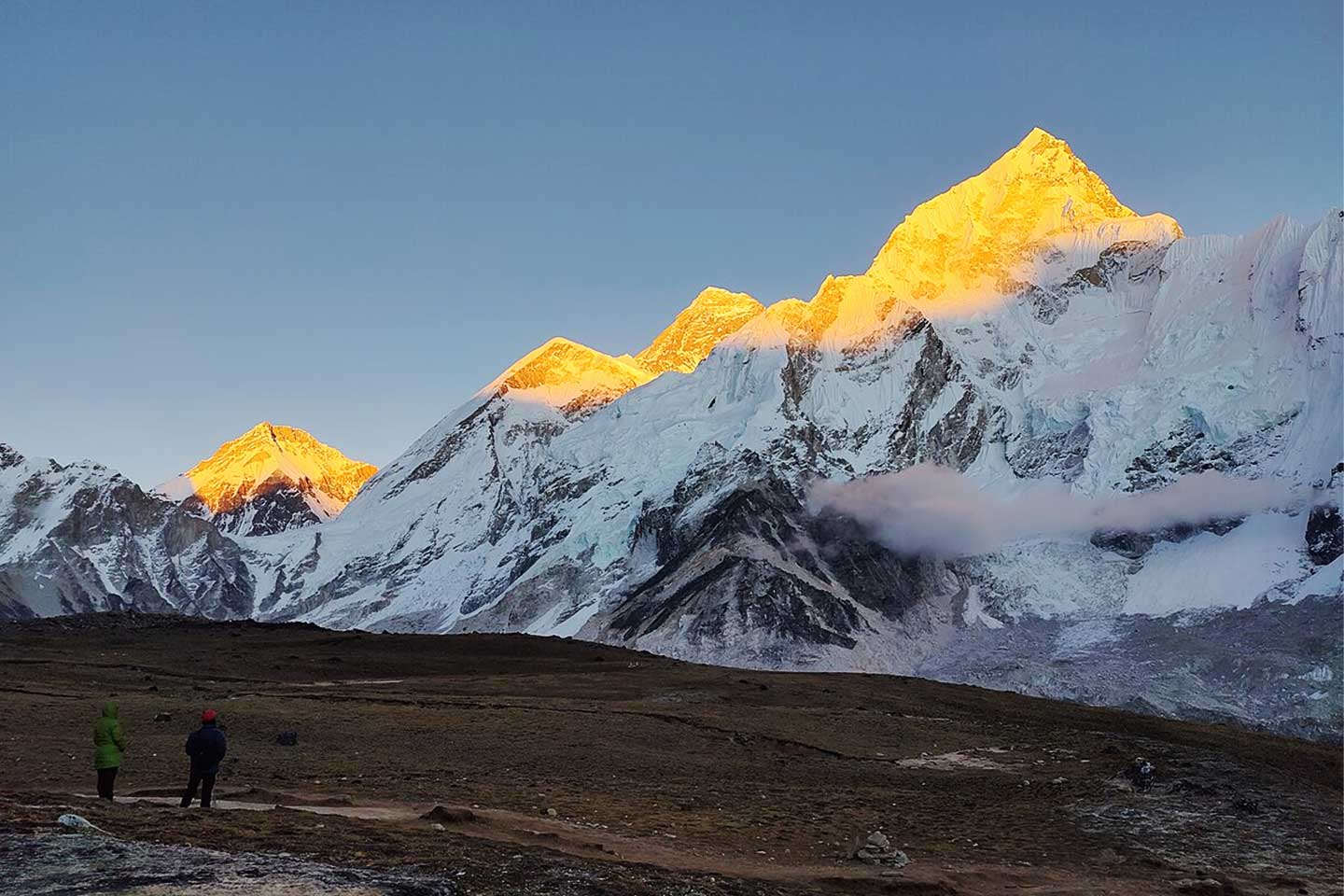
The descent back to Gorakshep is gentler, offering a quieter perspective of the trail. Here, you can reflect on the accomplishment of standing at one of the most iconic viewpoints in the world and enjoy a hearty breakfast surrounded by the serene beauty of the Khumbu region. The entire experience, from the early morning climb to witnessing the stunning sunrise and panoramic vistas, makes Kala Patthar a truly unforgettable highlight of any Everest adventure.
Challenges of Kala Patthar Hiking
Although the experience is rewarding, every trek to Kala Patthar presents its challenges:
- Trekkers on treks above 5,500 meters run the risk of developing Acute Mountain Sickness (AMS) if they have not properly acclimatized.
- Steep and rocky terrain: sections of the trail are rocky, rough, and, in certain cases, icy, necessitating observant footing.
- Freezing Weather: We have to walk in cold temperatures before the day begins, particularly during the fall and spring.
- Its physical conditions: The height requires endurance and heart strength.
- Scarcity of facilities: There are no lodges and shelters on the way uphill; this is why it is necessary to carry the water, snacks, or important equipment.
Facilities at Kala Patthar
There are basic facilities at Kala Patthar itself because it is a remote and high-altitude location. Trekkers use Gorakshep as their base, which offers:
- Accommodation: A very basic small tea cafe, collective rooms, a hot bed and minimal amenities.
- Food: Nepali dishes such as Dal Bhat, noodles, soups, tea, coffee, etc., are served.
- Water: There is a shortage of water; hence, trekkers have to carry their water bottles.
- Areas of rest: The trail has natural resting places and little or no built shelters.
- Medicine: First aid services at Gorakshep are basic, but in case of emergency, one has to go to lower altitudes.
- Photography Opportunities: Summit offers perfect panoramic photography to its users.
Tips for Preparing to trek Kala Patthar
Technical mountaineering is not required to climb Kala Patthar, but we strongly advise exercising caution when enjoying such an experience.
- Health is beneficial. To prepare for the climb, individuals should train their bodies through cardio exercises such as trekking, biking, or running, along with leg strength exercises like squats, lunges, or stair climbing. Well-developed legs and stamina will rush the trip up the mountain.
- Altitude acclimatization is also quite vital. Using a slow trekking program with ample rest days will minimize the risk of altitude sickness. You can achieve this by drinking a lot of water, avoiding alcohol, and increasing your pace.
- The choice of clothing should account for significant temperature fluctuations. The cold walk may start freezing, and the best idea is to put on layers of the thermal base leisure suit, a warm layer, a down jacket, and a waterproof and windproof jacket. Don't forget to take and pack better trekking boots and a warm hat and gloves.
- And finally, bring a headlamp so that you can get started on the trail in the dark, trekking poles to gain stability on the steep trail, and your camera. Kala Patthar has some of the best views in the Himalayas, so don't miss the photo opportunity.
Is Kalapathar Worth It?
Kala Patthar offers most trekkers the most unforgettable experience of the entire Everest Base Camp Trail. You will feel like you've made a major achievement once you reach Base Camp, but it is only on Kala Patthar that you will somehow get a glimpse of Everest in all its lofty glory. The panoramic views at sunset or sunrise are not to be forgotten, and the sense of accomplishment that you have reached 5,545 meters above sea level cannot be described.
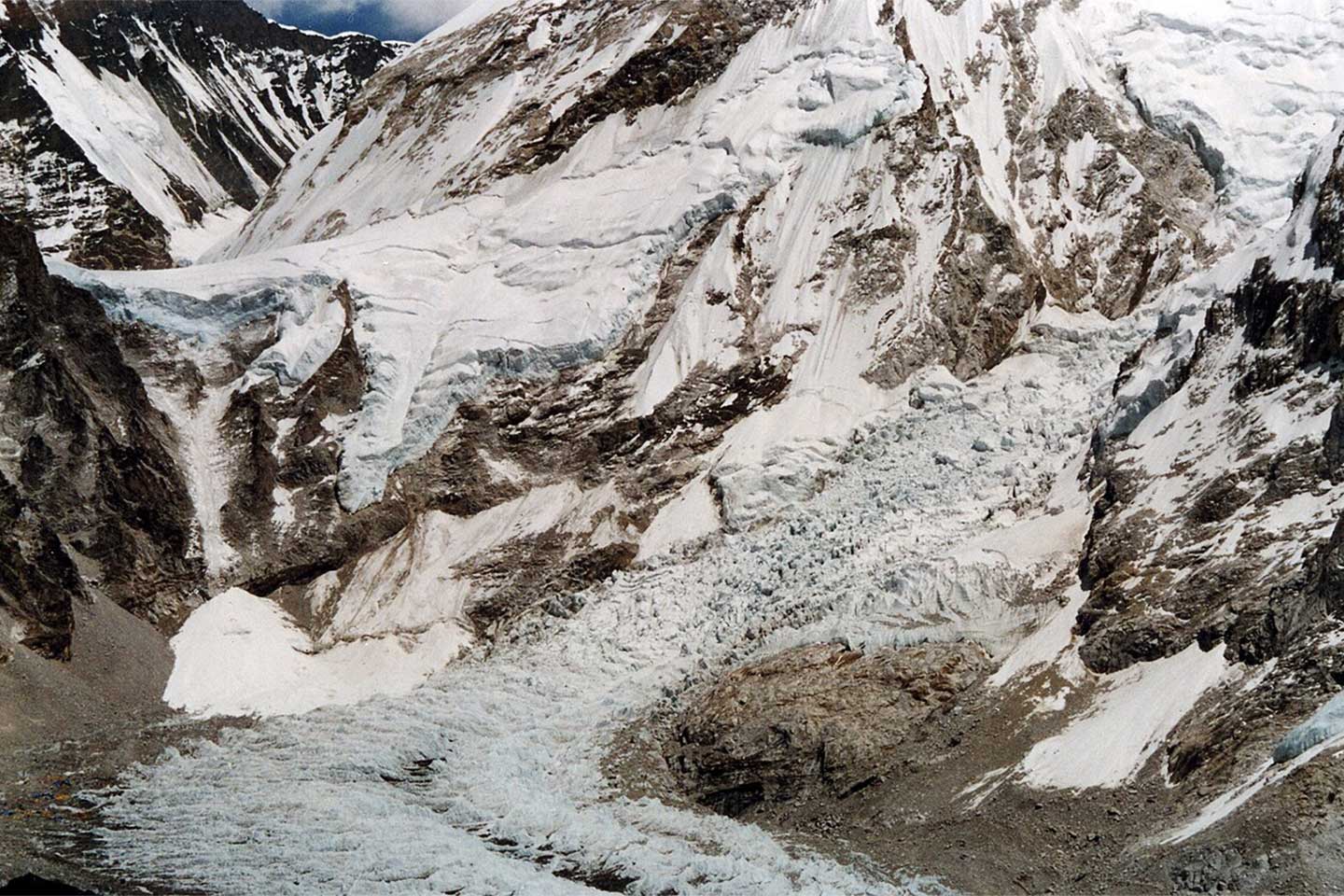
It is not only the landscape. The trek to Kala Patthar is very intimate. You feel small and strong as you face the wind and gaze at the tallest mountain. It is an emotional, almost spiritual experience, which many call the actual highlight of their trek.
Conclusion
While Kala Patthar may appear as a mere rocky ridge on the map, it serves as the epicenter of the Everest trek. It is the point where Everest-admiring could be turned into a reality. On the other hand, Base Camp certifies that you have reached the base of the world's tallest mountain. Kala Patthar is where you get to see Everest in all its fame.
The views of the rising sun on the Everest summit make it a life-changing physical experience to stand on Kala Patthar as a trekker, according to most people. One forgets about the hard work, the cold, and the thin air in front of this beauty. When planning your trek to Everest Base Camp, don't forget to include Kala Patthar, as this will make your trip unforgettable. Stop dreaming about Everest and visit to see it with your own eyes!
Book with Nepal Trek Adventure, and experience the most spectacular sunrise on earth: the Kala Patthar trek. I hope you have a front-row seat to Everest!




